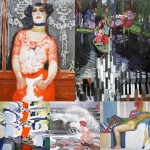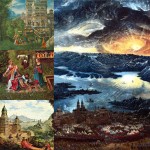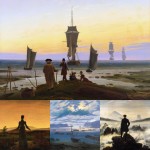The walk along the banks of the Danube in Budapest offers a meeting with the master of genre painting and great portrait painter Ignac Roskovics. Clearly not really with him, but with the wonderful bronze statue (sculptor Mihajlo Kolodko) that portrays him with a brush and easel while he paints. Among other things, the painter had the merit of creating a series of drawings dedicated to the people and nature of Transcarpathia, thus laying the foundations for a realistic art in the region.
El paseo por las orillas del Danubio en Budapest ofrece un encuentro con el maestro de la pintura de género y gran retratista Ignac Roskovics. Claramente no con él, sino con la maravillosa estatua de bronce (escultor Mihajlo Kolodko) que lo retrata con un pincel y un caballete mientras pinta. Entre otras cosas, el pintor tuvo el mérito de crear una serie de dibujos dedicados a la gente y la naturaleza de Transcarpathia, sentando así las bases para un arte realista en la región.
La passeggiata lungo le rive del Danubio a Budapest regala un incontro con il maestro della pittura di genere e grande ritrattista Ignac Roskovics. Chiaramente non propriamente con lui, ma con la meravigliosa statua in bronzo (scultore Mihajlo Kolodko) che lo ritrae con pennello e cavalletto mentre dipinge. Il pittore, tra il resto, ha avuto il merito di creare una serie di disegni dedicati alle persone e alla natura della Transcarpathia, ponendo così le basi per un’arte realistica nella regione.
- Art Puzzle by Savina Sciacqua
- La statua che ritrae Roskovics Ignac
This is the Art Puzzle that we dedicate to him where we clearly recognize the family influence (with the monumental mural painting of the churches), the Patroness of Hungary (Elizabeth of Francisco de Zurbaránma) and where you can also admire one of his most famous drawings (the one in black and white).
Este es el Art Puzzle que le dedicamos donde reconocemos claramente la influencia familiar (con la monumental pintura mural de las iglesias), la Patrona de Hungría (Isabel de Francisco de Zurbaránma) y donde también se puede admirar uno de sus dibujos más famosos (el de blanco y negro).
Questo è l’Art Puzzle che gli dedichiamo dove si riconosce chiaramente l’influenza familiare (con la pittura murale monumentale delle chiese), la Patrona di Ungheria (Elisabetta di Francisco de Zurbaránma) e dove si può anche ammirare uno dei suoi disegni più famosi (quello in bianco e nero).
- La patrona di Ungheria
- La Statua all’imbrunire
- La firma dell’artista
In 1875 Roshkovych joined the Academy of Arts in Budapest, where his teachers were leading Hungarian artists such as G. Benczúr and B. Sekel. He also studied in Paris, Munich and Rome. From Italy the artist returned to Hungary in 1883 and worked as a drawing teacher. Born in the village of Slavkivtsi (now Slovakia) from 1885 until the end of his life he lived in Budapest.
En 1875 Roshkovych ingresó en la Academia de Artes de Budapest, donde sus maestros fueron artistas húngaros de primera línea, como G. Benczúr y B. Sekel. También estudió en París, Munich y Roma. De Italia, el artista regresó a Hungría en 1883 y trabajó como profesor de dibujo. Nacido en el pueblo de Slavkivtsi (ahora Eslovaquia) desde 1885 hasta el final de su vida, vivió en Budapest.
Nel 1875 Roshkovych entrò a far parte dell’Accademia delle Arti di Budapest, dove i suoi insegnanti erano artisti ungheresi di spicco come G. Benczúr e B. Sekel. Ha studiato anche a Parigi, Monaco di Baviera e a Roma. Dall’Italia l’artista tornò in Ungheria nel 1883 e lavorò come insegnante di disegno. Nato nel villaggio di Slavkivtsi (ora Slovacchia) dal 1885 fino alla fine della sua vita ha vissuto a Budapest.
















